1. Wood AM, Brock TM, Heil K, Holmes R, Weusten A. A review on the management of hip and knee osteoarthritis. Int J Chronic Dis. 2013; 2013:845015. PMID:
26464847.

2. Kurtz S, Ong K, Lau E, Mowat F, Halpern M. Projections of primary and revision hip and knee arthroplasty in the United States from 2005 to 2030. J Bone Joint Surg Am. 2007; 89(4):780–785. PMID:
17403800.

3. Sloan M, Premkumar A, Sheth NP. Projected volume of primary total joint arthroplasty in the U.S., 2014 to 2030. J Bone Joint Surg Am. 2018; 100(17):1455–1460. PMID:
30180053.


4. Trasolini NA, McKnight BM, Dorr LD. The opioid crisis and the orthopedic surgeon. J Arthroplasty. 2018; 33(11):3379–3382.e1. PMID:
30075877.


5. Ackerman IN, Bohensky MA, Zomer E, Tacey M, Gorelik A, Brand CA, et al. The projected burden of primary total knee and hip replacement for osteoarthritis in Australia to the year 2030. BMC Musculoskelet Disord. 2019; 20(1):90. PMID:
30797228.



6. Min BW, Kim Y, Cho HM, Park KS, Yoon PW, Nho JH, et al. Perioperative pain management in total hip arthroplasty: Korean Hip Society guidelines. Hip Pelvis. 2016; 28(1):15–23. PMID:
27536639.



7. Gan TJ. Poorly controlled postoperative pain: prevalence, consequences, and prevention. J Pain Res. 2017; 10:2287–2298. PMID:
29026331.



8. Gray CF, Smith C, Zasimovich Y, Tighe PJ. Economic considerations of acute pain medicine programs. Tech Orthop. 2017; 32(4):217–225. PMID:
29403150.



9. Wright EA, Katz JN, Abrams S, Solomon DH, Losina E. Trends in prescription of opioids from 2003-2009 in persons with knee osteoarthritis. Arthritis Care Res (Hoboken). 2014; 66(10):1489–1495. PMID:
24782079.



10. Frenk SM, Porter KS, Paulozzi LJ. Prescription opioid analgesic use among adults: United States, 1999-2012. NCHS Data Brief. 2015; (189):1–8.
11. Fabi DW. Multimodal analgesia in the hip fracture patient. J Orthop Trauma. 2016; 30(Suppl 1):S6–S11. PMID:
27101321.

12. Prentice HA, Inacio MC, Singh A, Namba RS, Paxton EW. Preoperative risk factors for opioid utilization after total hip arthroplasty. J Bone Joint Surg Am. 2019; 101(18):1670–1678. PMID:
31567804.


13. Inacio MC, Pratt NL, Roughead EE, Paxton EW, Graves SE. Opioid use after total hip arthroplasty surgery is associated with revision surgery. BMC Musculoskelet Disord. 2016; 17(1):122. PMID:
26965992.



14. Menendez ME, Ring D, Bateman BT. Preoperative opioid misuse is associated with increased morbidity and mortality after elective orthopaedic surgery. Clin Orthop Relat Res. 2015; 473(7):2402–2412. PMID:
25694266.

15. Cook DJ, Kaskovich SW, Pirkle SC, Mica MA, Shi LL, Lee MJ. Benchmarks of duration and magnitude of opioid consumption after total hip and knee arthroplasty: a database analysis of 69,368 patients. J Arthroplasty. 2019; 34(4):638–644.e1. PMID:
30642706.


16. Kim YI, Kim YY, Yoon JL, Won CW, Ha S, Cho KD, et al. Cohort profile: National Health Insurance Service-Senior (NHIS-Senior) cohort in Korea. BMJ Open. 2019; 9(7):e024344.

17. Seong SC, Kim YY, Park SK, Khang YH, Kim HC, Park JH, et al. Cohort profile: the National Health Insurance Service-National Health Screening Cohort (NHIS-HEALS) in Korea. BMJ Open. 2017; 7(9):e016640.

18. Lee J, Lee JS, Park SH, Shin SA, Kim K. Cohort profile: the National Health Insurance Service-National Sample Cohort (NHIS-NSC), South Korea. Int J Epidemiol. 2017; 46(2):e15. PMID:
26822938.

19. Suh YS, Lee JJ, Nho JH, Lee JJ, Won SH, Yang HJ. Transfusion trends in hip arthroplasty in Korea: a nationwide study by the Korean National Health Insurance Service. Transfusion. 2019; 59(7):2324–2333. PMID:
31022315.


20. Cho SK, Jung SY, Choi S, Im SG, Kim H, Choi WS, et al. Factors related to the use of opioids as early treatment in patients with knee osteoarthritis. Arthritis Res Ther. 2019; 21(1):222. PMID:
31685008.



21. Simoni AH, Nikolajsen L, Olesen AE, Christiansen CF, Pedersen AB. Opioid use after hip fracture surgery: a Danish nationwide cohort study from 2005 to 2015. Eur J Pain. 2019; 23(7):1309–1317. PMID:
30848038.


23. Quan H, Sundararajan V, Halfon P, Fong A, Burnand B, Luthi JC, et al. Coding algorithms for defining comorbidities in ICD-9-CM and ICD-10 administrative data. Med Care. 2005; 43(11):1130–1139. PMID:
16224307.


24. Gallagher R. New category of opioid-related death. Can Fam Physician. 2018; 64(2):95–96. PMID:
29449232.


25. Summers S, Grau L, Massel D, Rosas S, Ong A, Hernandez VH. Opioid use disorders are associated with perioperative morbidity and mortality in the hip fracture population. J Orthop Trauma. 2018; 32(5):238–244. PMID:
29356800.


26. Goplen CM, Verbeek W, Kang SH, Jones CA, Voaklander DC, Churchill TA, et al. Preoperative opioid use is associated with worse patient outcomes after total joint arthroplasty: a systematic review and meta-analysis. BMC Musculoskelet Disord. 2019; 20(1):234. PMID:
31103029.



27. Mudumbai SC, Chung P, Nguyen N, Harris B, Clark JD, Wagner TH, et al. Perioperative opioid prescribing patterns and readmissions after total knee arthroplasty in a national cohort of veterans health administration patients. Pain Med. 2020; 21(3):595–603. PMID:
31309970.


28. Kim SC, Jin Y, Lee YC, Lii J, Franklin PD, Solomon DH, et al. Association of preoperative opioid use with mortality and short-term safety outcomes after total knee replacement. JAMA Netw Open. 2019; 2(7):e198061. PMID:
31365106.

29. Chen EY, Lasky R, Dotterweich WA, Niu R, Tybor DJ, Smith EL. Chronic prescription opioid use before and after total hip and knee arthroplasty in patients younger than 65 years. J Arthroplasty. 2019; 34(10):2319–2323. PMID:
31255407.


30. Pivec R, Issa K, Naziri Q, Kapadia BH, Bonutti PM, Mont MA. Opioid use prior to total hip arthroplasty leads to worse clinical outcomes. Int Orthop. 2014; 38(6):1159–1165. PMID:
24573819.



31. Goesling J, Moser SE, Zaidi B, Hassett AL, Hilliard P, Hallstrom B, et al. Trends and predictors of opioid use after total knee and total hip arthroplasty. Pain. 2016; 157(6):1259–1265. PMID:
26871536.



32. Kim SC, Choudhry N, Franklin JM, Bykov K, Eikermann M, Lii J, et al. Patterns and predictors of persistent opioid use following hip or knee arthroplasty. Osteoarthritis Cartilage. 2017; 25(9):1399–1406. PMID:
28433815.



33. Oh TK, Jeon YT, Choi JW. Trends in chronic opioid use and association with five-year survival in South Korea: a population-based cohort study. Br J Anaesth. 2019; 123(5):655–663. PMID:
31558315.


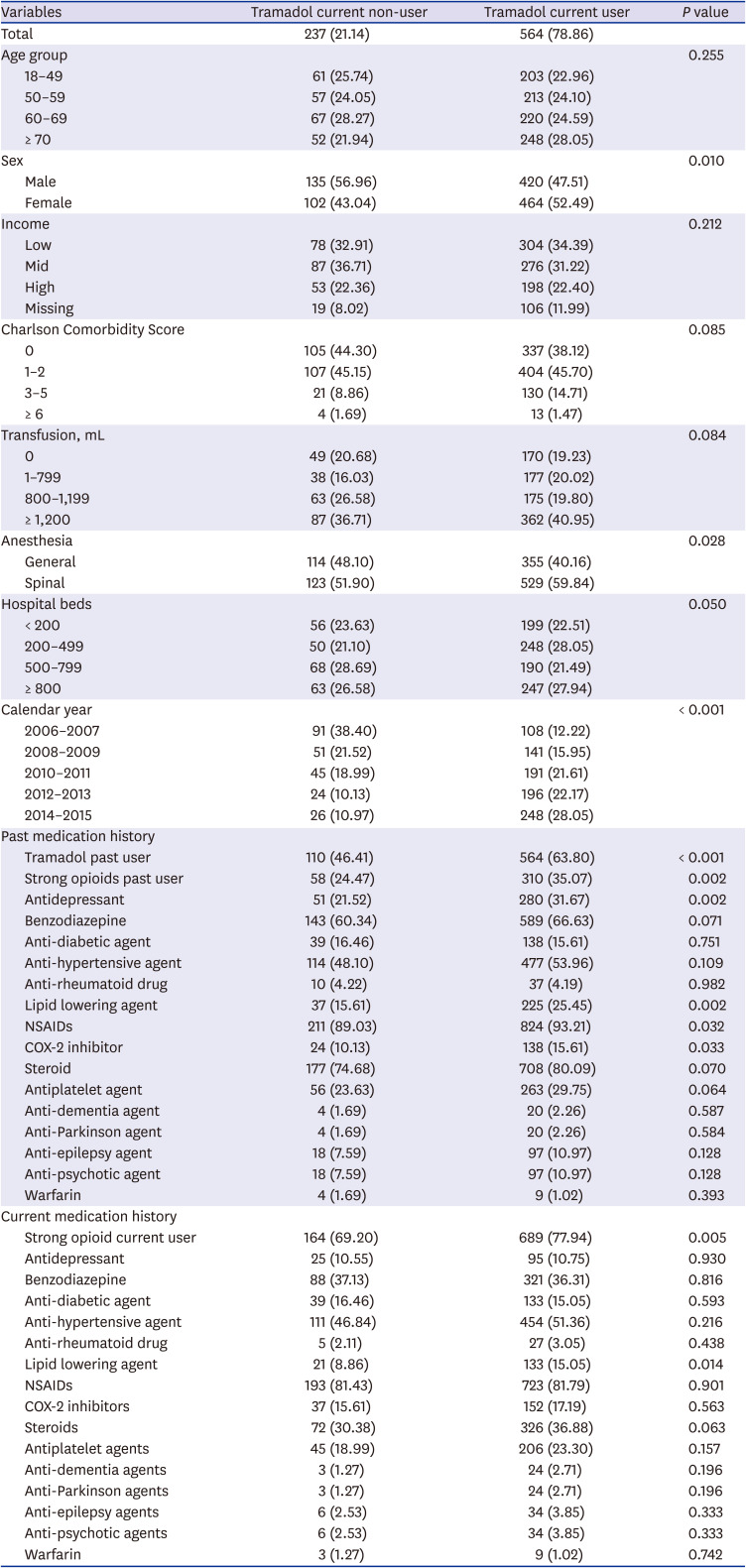
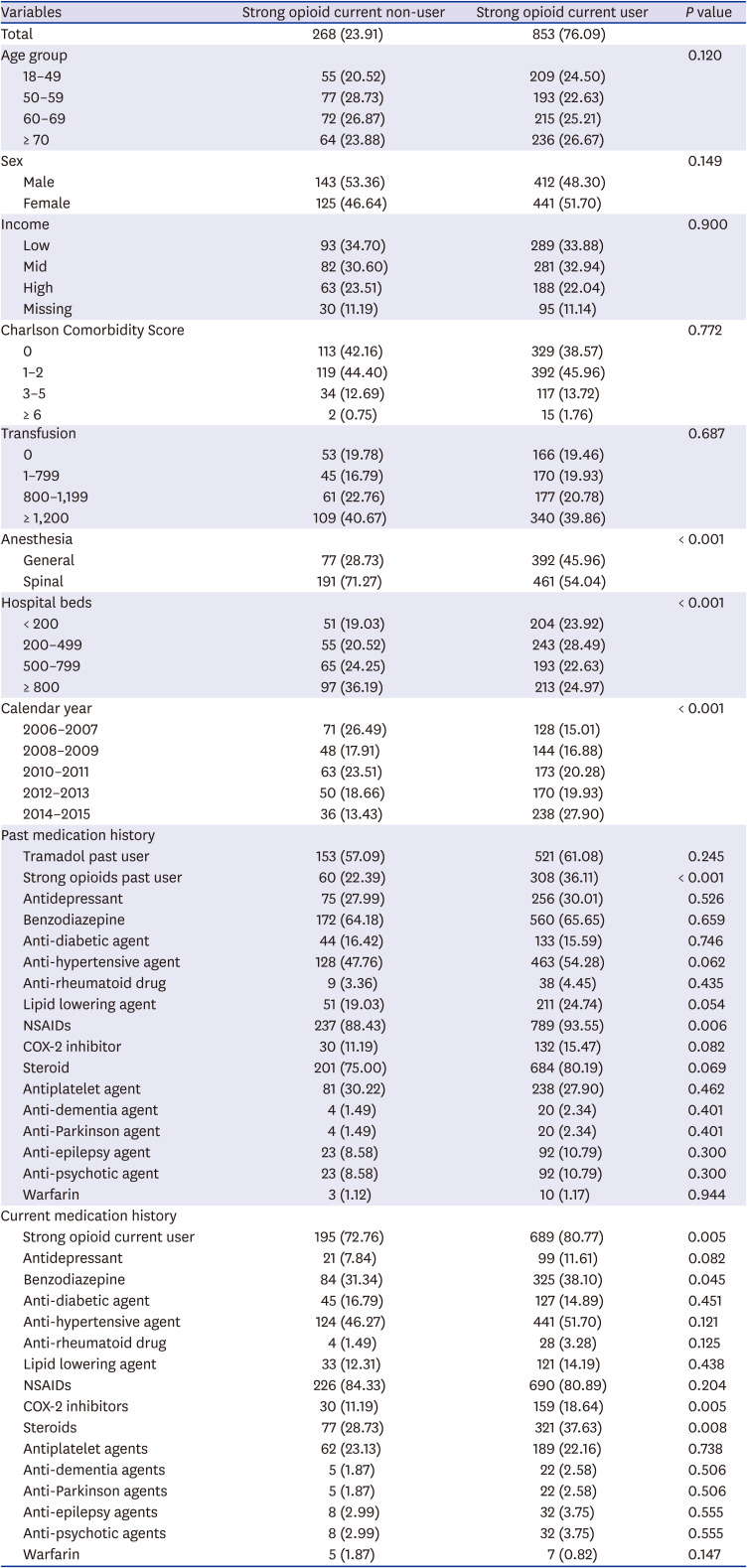
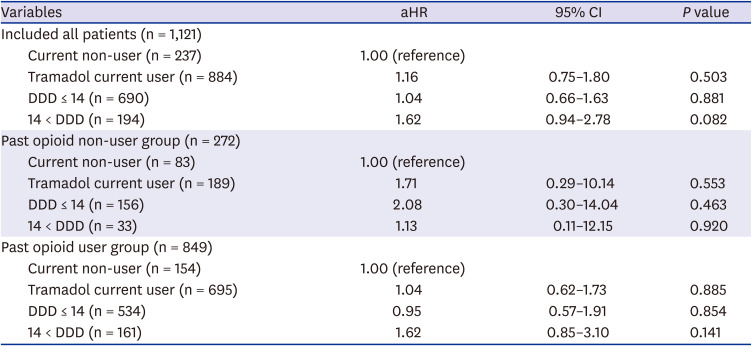
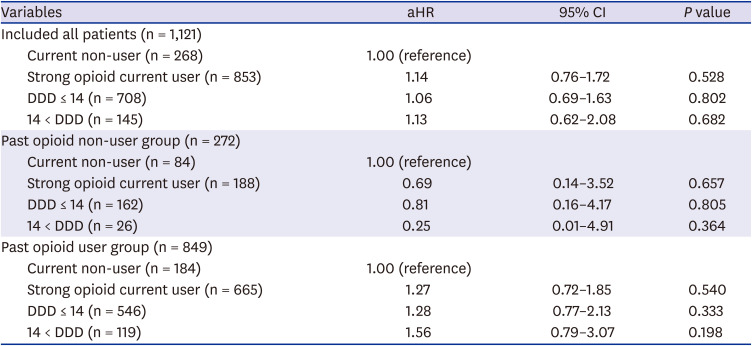





 PDF
PDF Citation
Citation Print
Print



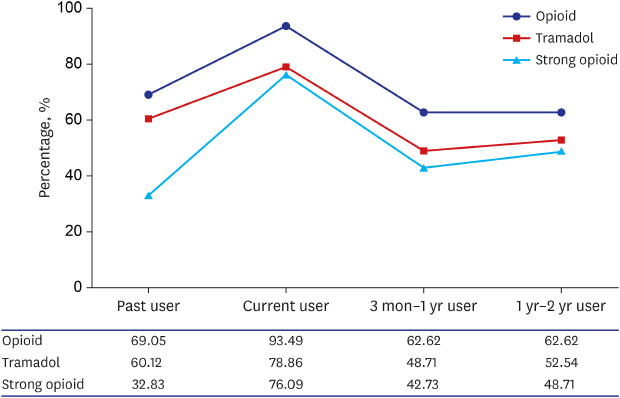
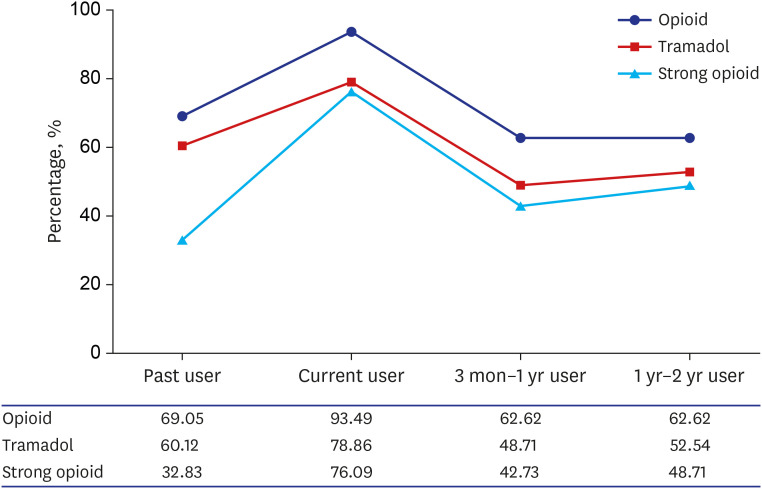
 XML Download
XML Download